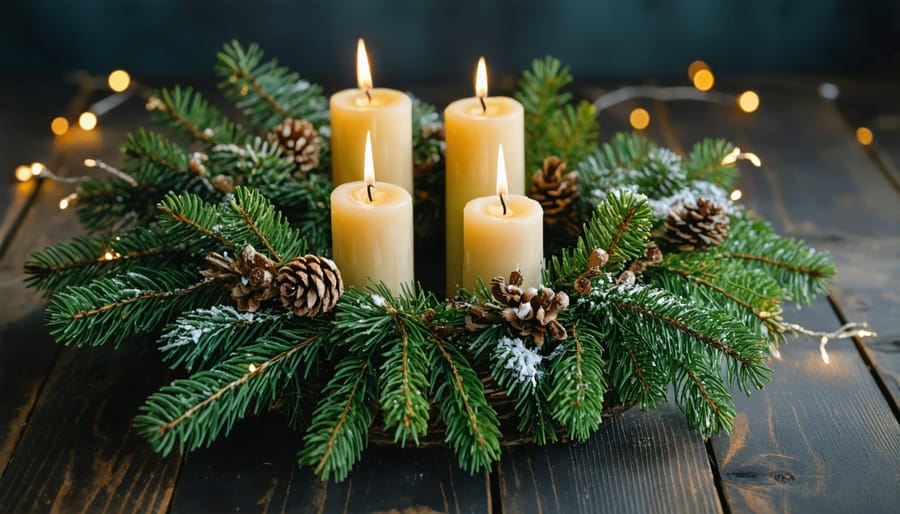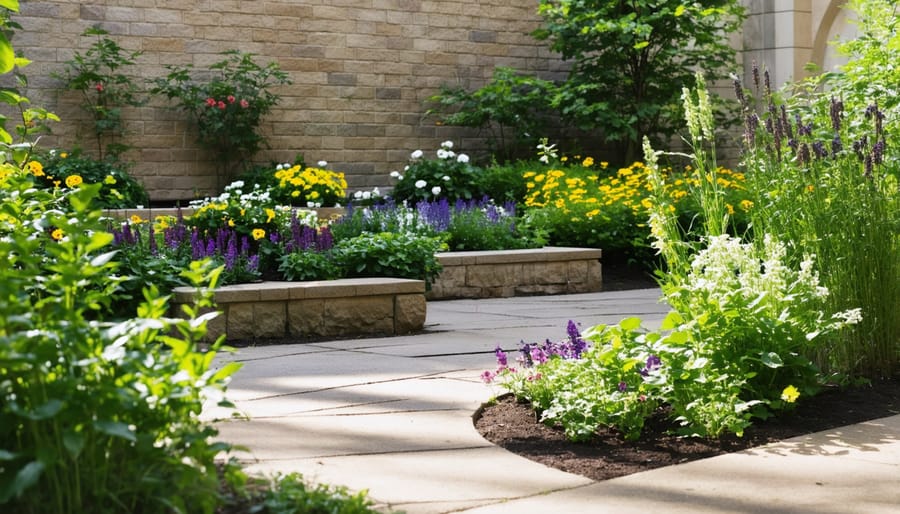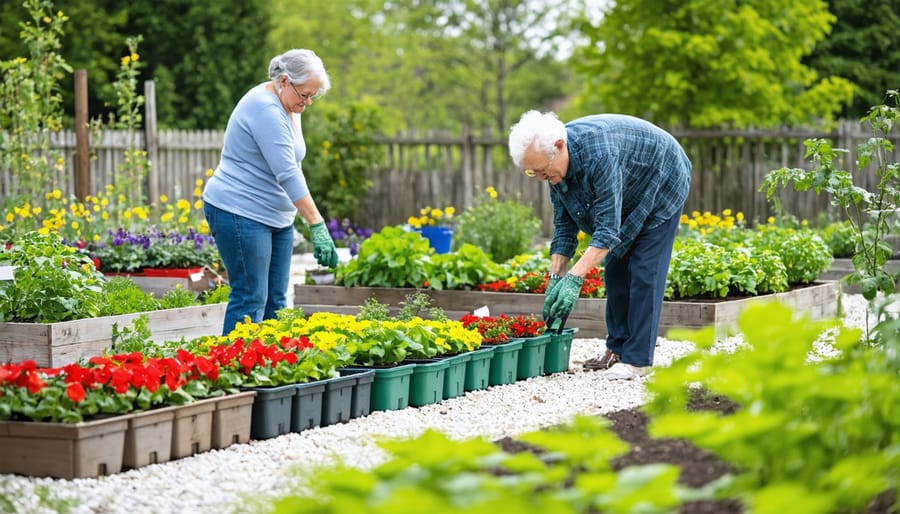The rhythmic seasons of the Catholic liturgical year mirror God’s own masterful orchestration of creation, inviting us into a deeper understanding of both faith and our role as stewards of His earth. Through Christian environmental stewardship, these sacred seasons – Advent, Christmas, Lent, Easter, and Ordinary Time – guide us in nurturing both our spiritual growth and our connection to God’s creation. Like the natural cycles that sustain our planet, each liturgical season carries unique teachings about renewal, sacrifice, celebration, and faithful guardianship of our common home. As we journey through these holy seasons, we’re reminded that our call to care for creation isn’t just an environmental mandate but a profound expression of our Catholic faith. Whether we’re embracing Advent’s hopeful anticipation or experiencing Easter’s promise of renewal, these liturgical rhythms inspire us to see environmental care as an integral part of our spiritual journey. Join us as we explore how these five sacred seasons can transform our understanding of faith while deepening our commitment to protecting and preserving God’s magnificent creation.
Advent: A Season of Environmental Anticipation

Hope for Creation’s Renewal
Advent’s message of hope extends beyond our spiritual lives to encompass God’s entire creation. As we anticipate Christ’s coming, we’re reminded of His role not only as humanity’s Savior but also as the restorer of all creation. Romans 8:19-21 tells us that creation itself eagerly awaits liberation from decay, joining in the hope of redemption.
During this season, we’re called to reflect on our role as stewards of God’s creation. Just as we prepare our hearts for Christ’s arrival, we can prepare our environment for renewal. This might involve participating in local conservation efforts, adopting more sustainable practices in our daily lives, or supporting initiatives that protect and restore God’s creation.
The purple colors of Advent remind us of both royalty and penitence, calling us to acknowledge our responsibility for environmental degradation while maintaining hope in Christ’s power to make all things new. Through simple actions like reducing waste, planting trees, or teaching others about creation care, we participate in God’s ongoing work of renewal.
As we light each Advent candle, let it remind us that Christ’s light brings hope not just to human hearts, but to all creation. This season invites us to embrace our role as caretakers of God’s earth while we await the ultimate restoration of all things in Christ.
Preparing the Way Through Green Practices
Just as Advent is a time of preparation for Christ’s coming, we can prepare our world for a more sustainable future through mindful environmental practices. The season of Advent teaches us about watchful anticipation and active preparation, principles we can apply to our environmental stewardship.
Consider starting an Advent garden project, growing herbs or winter vegetables that remind us of our connection to God’s creation. As we prepare our homes for Christmas, we can choose eco-friendly decorations, using natural materials like pine cones, branches, and dried orange slices. These choices not only reduce waste but create meaningful traditions that honor both our faith and the environment.
During this preparatory season, we can also audit our daily habits. Simple actions like reducing energy consumption by using LED Christmas lights, composting kitchen waste, or starting a recycling system become spiritual practices when done with intentional care for God’s creation. These activities mirror the Advent themes of hope and preparation while contributing to environmental wellness.
By integrating green practices into our Advent observations, we demonstrate our role as stewards of creation while preparing our hearts and our world for Christ’s coming. These actions become prayers in motion, expressing our faith through practical care for our common home.
Christmas: Celebrating Earth’s Divine Gift
The Incarnation and Creation Care
The Incarnation, where God became flesh in Jesus Christ, reveals a profound truth about the sanctity of the physical world. Through this divine act, God not only redeemed humanity but also affirmed the goodness of His creation. As we reflect on Christ’s call to care for creation, we see how the Word becoming flesh sanctifies all matter, reminding us of our responsibility to be good stewards of the Earth.
During the liturgical seasons, particularly in Advent and Christmas, we witness how God chose to enter our world through the material realm. This divine choice elevates the importance of the physical world and challenges us to view environmental stewardship as a sacred duty. Just as Christ honored creation by taking on human form, we too are called to honor and protect the natural world He inhabited.
The Incarnation teaches us that God’s love extends to all creation, not just humanity. This understanding should inspire us to care for our common home with reverence and responsibility, recognizing that in protecting the environment, we honor both the Creator and the creation He so deeply loves. Through this lens, environmental stewardship becomes not just a practical necessity but a spiritual practice that reflects our faith in action.
Sustainable Christmas Celebrations
During the Christmas season, we can honor both our faith and God’s creation through mindful celebrations. Consider using LED lights for decorations, which consume significantly less energy while still creating a festive atmosphere. When selecting a Christmas tree, opt for a locally grown live tree that can be replanted or composted, or invest in a high-quality artificial tree that can be reused for many years.
Create eco-friendly decorations using natural materials like pinecones, dried orange slices, and cinnamon sticks, which not only reduce waste but also fill your home with delightful seasonal scents. When wrapping gifts, choose recyclable paper or reusable fabric gift bags. Better yet, consider giving experiences or charitable donations as gifts, reducing material consumption while spreading Christmas joy.
For Christmas meals, support local farmers by purchasing seasonal ingredients, and plan portions carefully to minimize food waste. Any leftover food can be shared with neighbors or donated to local food banks, embodying the spirit of giving that Christ taught us. Consider using real dishes instead of disposables for gatherings, and encourage guests to carpool to holiday events.
Remember that sustainable celebrations don’t diminish the joy of Christmas; rather, they honor God’s creation while celebrating the birth of our Savior.
Lent: Environmental Repentance and Renewal

Ecological Fasting and Sacrifice
During the Lenten season, Catholics are increasingly embracing ecological fasting as a meaningful way to honor both their faith and God’s creation. This practice extends beyond traditional fasting from food to include reducing environmental impact through mindful consumption and waste reduction. By choosing to fast from single-use plastics, excessive energy usage, or unnecessary purchases, believers connect their spiritual discipline with environmental stewardship.
The concept of ecological sacrifice during Lent draws inspiration from Pope Francis’s call to care for our common home in Laudato Si’. This modern interpretation of fasting helps faithful individuals recognize their relationship with creation while developing sustainable habits that persist beyond the Lenten period. Simple practices might include using reusable shopping bags, composting food waste, or choosing to walk or cycle instead of driving.
This environmental dimension of Lenten sacrifice reminds us that caring for God’s creation is an integral part of our faith journey. Many parishes now incorporate eco-friendly initiatives during Lent, such as community clean-ups, sustainable garden projects, or educational workshops on environmental stewardship. These activities not only benefit the environment but also strengthen the community’s commitment to living more sustainably as an expression of faith and love for God’s creation.
Healing Our Relationship with Creation
During the contemplative season of Lent, we are called to examine our relationship with God’s creation and seek reconciliation where we have fallen short. As Christians leading environmental action, we can embrace this time of reflection and renewal by adopting meaningful practices that honor our role as stewards of the Earth.
Consider incorporating these Lenten practices: reducing single-use plastics, choosing plant-based meals on Fridays, composting food waste, or walking instead of driving when possible. These acts of environmental mindfulness become forms of prayer when offered with intention and love for God’s creation.
Scripture reminds us that “the earth is the Lord’s, and everything in it” (Psalm 24:1). During Lent, we can reflect on this truth through activities like nature walks, garden preparation, or participating in community clean-up events. These practices help us reconnect with the natural world while fostering a spirit of care and responsibility.
By combining traditional Lenten disciplines with environmental awareness, we create meaningful pathways for healing our relationship with creation. This sacred season invites us to recognize our impact on the environment and take concrete steps toward being better caretakers of God’s precious gift to us.
Easter: New Life for All Creation
Creation’s Easter Joy
Easter season brings forth a magnificent display of God’s creative power in nature, mirroring the resurrection story in countless ways. As spring unfolds, we witness the divine miracle of new life emerging from what appeared lifeless during winter. Delicate flower buds push through thawing soil, trees burst with fresh leaves, and birdsong fills the morning air – all testifying to the promise of renewal that Easter represents.
This season invites us to marvel at creation’s participation in celebrating Christ’s victory over death. Just as Jesus rose from the tomb, bringing new life to humanity, nature awakens from its winter slumber, reminding us of God’s constant presence in our world. The flowering dogwood, with its cross-shaped blossoms, seems specially designed to herald the Easter message, while the butterfly’s transformation from chrysalis to wings beautifully symbolizes our own spiritual rebirth.
During Easter, we’re called to recognize these sacred connections between faith and nature. Whether tending a garden, walking in nature, or simply observing the changing seasons, we can experience God’s love through His creation. This awareness deepens our appreciation for both the Easter mystery and our role as stewards of God’s earth, inspiring us to protect and nurture the natural world as part of our Christian witness.
Springtime Renewal Practices
As Easter heralds the season of new life and resurrection, Catholics can embrace springtime renewal practices that honor both faith and Creation. Just as Christ’s resurrection brings new life, spring offers countless opportunities to participate in God’s ongoing work of renewal. Consider starting a parish community garden where members can grow vegetables for local food banks while meditating on Christ’s parables about seeds and growth. Organize a spring cleanup day for your church grounds or local parks, reflecting on how caring for Creation mirrors God’s care for us.
Families can create butterfly gardens with native plants, teaching children about transformation while supporting local ecosystems. This activity particularly resonates with Easter’s themes of metamorphosis and new life. Indoor seed starting projects in late winter can help parishioners prepare for outdoor planting while providing tangible lessons about faith, patience, and growth.
The Easter season also presents perfect opportunities for sustainable practices like composting, which transforms waste into life-giving soil, much like how God transforms our spiritual lives. Consider organizing workshops on eco-friendly practices, connecting them to Catholic social teaching about environmental stewardship. These activities not only benefit our environment but also strengthen our community bonds and deepen our understanding of God’s love for all Creation.
Ordinary Time: Sustained Environmental Commitment
Daily Creation Care
As faithful stewards of God’s creation, we can align our environmental consciousness with the rhythm of the liturgical calendar. Each season offers unique opportunities for caring for God’s creation through mindful practices and spiritual reflection. During Advent, we can focus on reducing consumption and waste as we prepare our hearts for Christ’s coming. The penitential season of Lent invites us to examine our environmental impact and make conscious choices to live more sustainably. Easter’s celebration of new life can inspire us to nurture garden spaces and support local biodiversity. In Ordinary Time, we can establish regular eco-friendly habits that honor our role as creation’s caretakers. Through prayer walks, community clean-ups, and mindful consumption, we transform our faith journey into active environmental stewardship. These practices remind us that caring for the Earth is an essential expression of our Catholic faith and love for our Creator.

Building Sustainable Communities
As Catholics, we are called to be stewards of God’s creation, and the liturgical seasons provide a beautiful framework for environmental action within our communities. During Advent, we can initiate recycling programs and energy conservation efforts as we prepare our hearts and homes. Lent offers a perfect opportunity to embrace sustainable practices through fasting from single-use plastics and excessive consumption. Easter season inspires us to bring new life to our environment through community gardens and tree-planting initiatives.
The green colors of Ordinary Time remind us of our ongoing responsibility to care for creation. This extended period is ideal for implementing long-term sustainability projects, such as composting programs in parish grounds or organizing eco-friendly education workshops. During Christmas, we can demonstrate our love for God’s creation by choosing eco-friendly decorations and reducing waste.
By aligning our environmental stewardship with the liturgical calendar, we create meaningful connections between our faith and ecological responsibility. Together, we can build communities that honor God’s creation while preparing a better world for future generations. Remember, every small action, when multiplied across our faith community, creates significant positive change for our common home.
As we journey through the liturgical seasons, we are reminded that our call to environmental stewardship is deeply rooted in our Catholic faith. Each season offers unique opportunities to reflect on our relationship with God’s creation and our responsibility to care for it. By integrating environmental awareness into our liturgical practices, we honor the Creator while protecting the gift of our common home for future generations.
Let us embrace these sacred times as opportunities to grow in our faith while taking concrete actions to preserve and protect our environment. Whether through simple daily choices or community-wide initiatives, we can demonstrate our love for God by caring for His creation. As Pope Francis reminds us, “Living our vocation to be protectors of God’s handiwork is essential to a life of virtue; it is not an optional or secondary aspect of our Christian experience.”
May these liturgical seasons continue to inspire and guide us in our journey of faith and environmental stewardship, bringing us closer to God and to one another as we work together to care for our common home.
